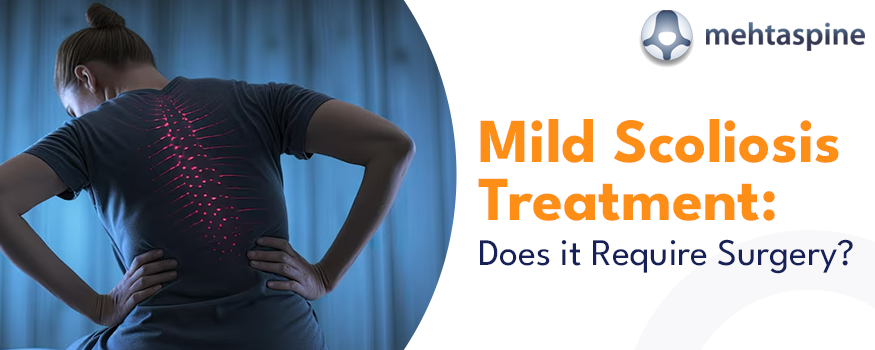Mild Scoliosis Treatment: Does it Require Surgery?
Mild Scoliosis: Scoliosis is the abnormal curvature of the spine where the spine develops a side-to-side curve in the back. A patient can develop the curvature anywhere in the back, but in most cases, scoliosis develops in the upper or lower back. The curvature can be as mild as a 10-degree angle or as severe as a 100-degree angle, and the scoliosis condition is classified as low, soft, or extreme based on this angle of curvature.
“Unlike popular conception, the spine is not a single block of bony structure. The spine is stacked with 33 vertebrae and has natural curves in the vertical plane. Scoliosis happens when the spine develops a side-to-side curve in the horizontal plane at an angle greater than 10 degrees. Any spinal curvature with a Cobb angle between 10 and 25 degrees is considered a mild form of scoliosis”, says a leading spine surgeon in UK and scoliosis specialist, Mr Jwalant S Mehta.
In this blog, let us delve into Mild Scoliosis and its treatment options. We will look at its symptoms and then, with the help of Scoliosis Surgeon Mr. Jwalant S. Mehta, answer the most pertinent question – Does Mild Scoliosis require Surgery?
The Most Common Type of Scoliosis
More than 80% of scoliosis cases are mild, with a Cobb angle that hovers around 10 to 25 degrees. Though it occurs across both genders, young girls, especially premature ones, are more prone to this form of scoliosis.
While the angle of curvature is not as low as to be considered normal or insignificant, the symptoms may show up intermittently, and the same could be the case with pain. As a result, the condition, in most cases, is ignored, which stealthily makes it dangerous because of its potential to progress silently.
Symptoms of Mild Scoliosis:
Scoliosis can be identified by paying careful attention to the outward characteristics of the patient. Uneven hips, shoulders, or leg length, a slouched appearance, and problems or issues with balance or coordination are some giveaway signs of changes in the spine’s integrity.
Given the mild nature of the curvature, one must carefully look at even minute changes, instead of waiting until the symptoms worsen.
Mild Scoliosis Treatment: Does It Require Surgery?
This approach involves physical therapy, body mechanics awareness, and tailored exercises to improve flexibility and posture while a spine surgeon regularly monitors the progress of the treatment. For adolescents, braces might be recommended to stabilize the curve while enabling growth.
So, whether it is for mild scoliosis in children or mild scoliosis in adults no, surgery is not considered a preferred treatment for mild scoliosis because plenty of options are available today that can help control the progress and align the spine to its normal position. Only when these methods fail to curtail the curvature of the curves and only when the spinal curvature becomes severe, typically greater than 40 degrees, is Surgery considered a treatment option.
Children and Adult Spinal Surgeon Mr. Jwalant S. Mehta is a specialist scoliosis surgeon with a proven track record in treating all forms of scoliosis with an array of surgical and non-surgical options. You can contact him here for more questions


